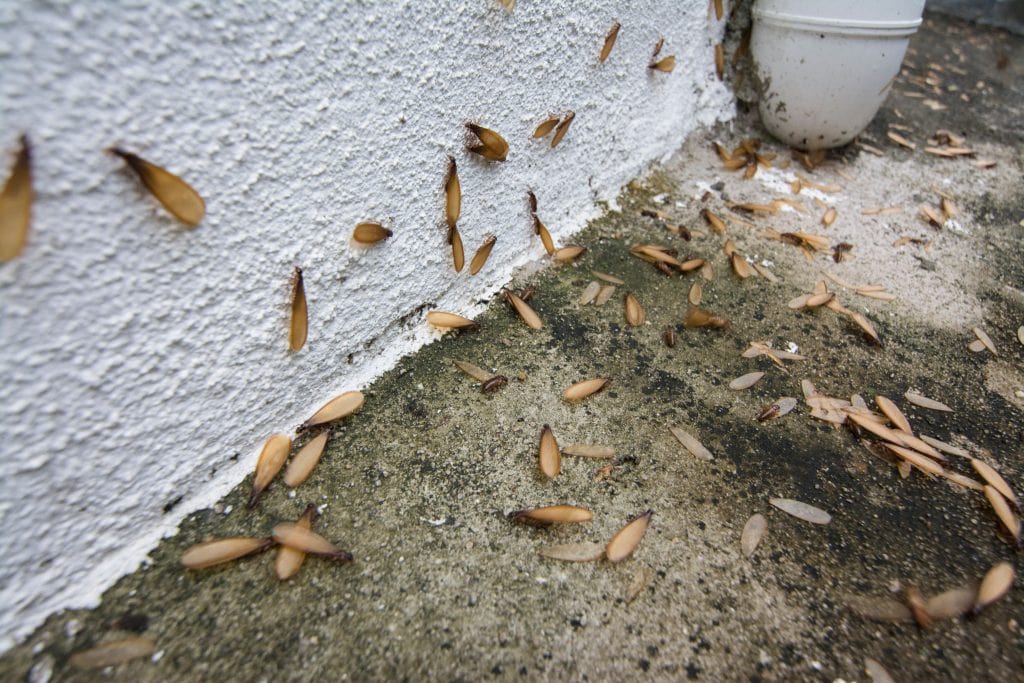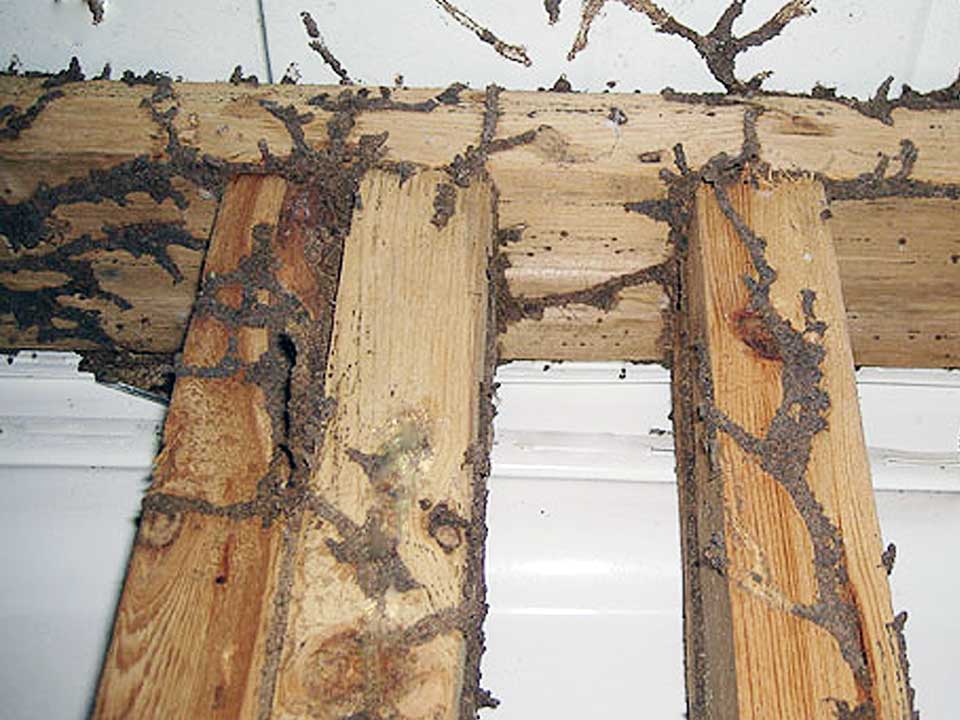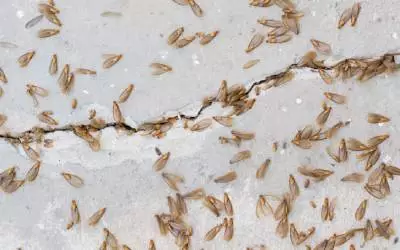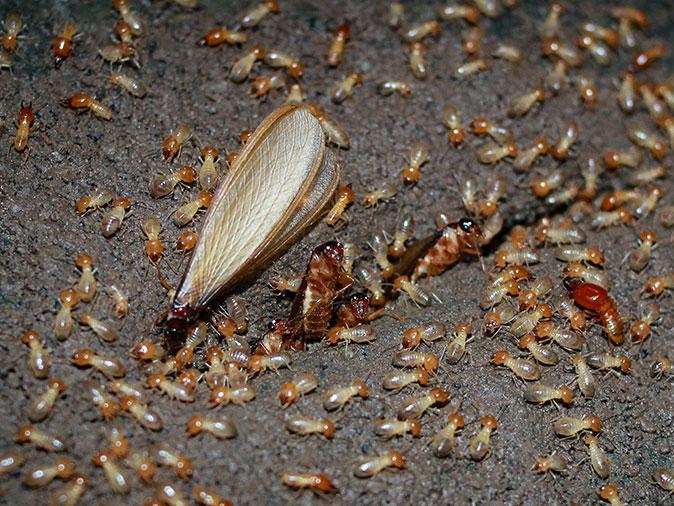What Causes Termites? Root Causes of Termite Infestation

Table of Contents
ToggleUnderstanding the Causes of Termites

1. Food Source: Cellulose
Termites are attracted to cellulose-rich materials such as wood, paper, and cardboard. Different species of termites have preferences for specific types of cellulose sources. For instance, some may target decaying wood while others may infest paper products.
2. Moisture: Vital for Survival
Moisture plays a crucial role in the life cycle of termites. Certain species, like dampwood termites, thrive in moist environments, while others, like subterranean termites, require moisture to build their nests. Leaky pipes, poor drainage systems, and inadequate ventilation can create favorable conditions for termite infestations.
3. Entry Points: Vulnerable Openings
Termites can enter buildings through cracks, gaps, and holes in the foundation, walls, or roof. Additionally, stacks of firewood, lumber, or mulch near the structure can provide easy access for termites seeking shelter and food.
4. Cracks in Building Exteriors
Cracks in the exterior of buildings offer termites easy entry points. It's essential to seal any cracks promptly to prevent termite infestations.
5. Wood-to-Earth Contact
When wood comes into direct contact with soil, it can attract termites. Ensuring that wooden structures are not in direct contact with the ground can help deter termite activity.
6. Wood Touching the House
Wooden elements of a building touching its structure can provide pathways for termites. Regularly inspecting and maintaining these areas can help prevent infestations.
7. Geography: Regional Factors
Termites are more prevalent in certain geographic regions due to climate and environmental factors. Understanding the local termite species and their behaviors can help homeowners implement appropriate prevention measures.
8. Gutters: Proper Maintenance
Clogged gutters can lead to water accumulation, creating moist environments that attract termites. Regular gutter cleaning and maintenance can reduce the risk of termite infestations.
9. Mulch: Potential Termite Haven
Mulch piles near buildings can create ideal habitats for termites. Using mulch made from materials less attractive to termites or placing it at a distance from structures can help mitigate the risk.
10. Openings in Building Foundation: Vulnerable Points
Gaps and openings in the building's foundation provide entry points for termites. Sealing these gaps with appropriate materials can help prevent termite infiltration.
11. Temperature: Environmental Influence
Temperature fluctuations can impact termite activity. Warmer climates tend to have higher termite populations, while colder temperatures may slow down their reproductive cycles.
12. Wood: Attractive Material
The presence of wood in or around buildings increases the likelihood of termite infestation. Using termite-resistant materials or treating wood with protective coatings can help deter termites.
13. Wood Piles: Potential Nesting Sites
Stacks of firewood or lumber stored near buildings can attract termites. Elevating woodpiles and keeping them away from structures can reduce the risk of infestation.
14. Improper Drainage: Moisture Accumulation
Poor drainage around buildings can lead to water accumulation, creating favorable conditions for termites. Ensuring proper grading and drainage systems can help prevent moisture buildup.
15. Landscaping: Impact on Termite Activity
Certain landscaping features, such as dense vegetation or excessive mulching, can create conducive environments for termites. Maintaining a well-manicured landscape and minimizing moisture sources can deter termite infestations.
16. Moist or Damp Areas: Termite Hotspots
Termites thrive in moist or damp environments. Identifying and addressing areas with excess moisture, such as leaky pipes or poorly ventilated spaces, can help reduce the risk of termite infestations.
What Causes Termites to Swarm?


Swarming: The Reproductive Process of Termites
Termites reproduce through a process called swarming. Swarming is when winged termites, also known as alates, leave their colony to mate and start new colonies elsewhere. This typically occurs in mature termite colonies when environmental conditions are favorable.
Triggered by Favorable Conditions
Swarming is triggered by certain environmental factors, such as moisture and temperature. Termites are attracted to damp environments, so areas with high humidity or water leaks are particularly attractive to them. Similarly, warmer temperatures encourage termites to become active and swarm.
Signs of a Mature Colony and Potential for Infestation
The presence of swarming termites is a sign of a mature colony. If you notice swarms of winged termites around your property, it's likely that there's an established termite colony nearby. This increases the risk of infestation, as the swarmers may be looking for new locations to establish satellite colonies.
Swarming Season Variations Depending on Location and Species
The timing of termite swarms can vary depending on geographical location and termite species. In warmer climates, swarms may occur year-round, while in cooler regions, they are more common during the spring and summer months. Different termite species also have their own swarming seasons.
Appearance and Behavior of Swarming Termites
Swarming termites are often mistaken for flying ants due to their similar appearance. However, there are key differences between the two. Termites have straight antennae, uniform waistlines, and wings of equal length, while flying ants have bent antennae, pinched waists, and wings of unequal length.
Differentiating Swarming Termites from Flying Ants
To differentiate between swarming termites and flying ants, it's important to closely examine their physical characteristics. Additionally, observing their behavior can help identify them accurately. Termites tend to swarm in large numbers and are attracted to light, while flying ants are more solitary and may be found near food sources.
What Causes Termites in the House?
Termites are tiny insects that can cause big problems in your home. Understanding what attracts them and how to prevent them can save you from costly damage.

Factors Contributing to Termite Infestation
Termites are drawn to environments that offer them food, moisture, and easy access. Here's what makes your house appealing to these unwanted guests:
Presence of Wood Sources
Termites love to feast on wood. If your house has a lot of wooden elements like furniture, flooring, or structural beams, it becomes a target for termites.
Moisture Problems
Moisture creates a hospitable environment for termites. Leaks, condensation, or poor ventilation can create damp areas in your home, which termites find attractive.
Easy Access Points
Termites can slip into your home through tiny cracks and gaps. If your foundation has openings or your walls have cracks, termites can easily find their way in.
High-Risk Areas for Termite Infestation
Certain parts of your house are more prone to termite infestation:
- Basement: Often damp and dark, basements provide an ideal habitat for termites.
- Crawlspaces: These areas are typically humid and less frequented, making them attractive to termites.
- Attics: Attics can have wood structures and may suffer from poor ventilation, making them susceptible to termite activity.
Signs of Termite Infestation
It's essential to be aware of the signs of termite infestation so you can take action promptly:
- Mud Tubes: Termites build mud tubes along surfaces to travel safely between their colony and food sources.
- Hollow Wood Sounds: If you tap on wood and it sounds hollow, it could be a sign of termite damage.
- Frass Droppings: Termite droppings, known as frass, resemble tiny wood pellets and indicate termite activity.
Preventive Measures
Taking preventive steps can help deter termite activity and protect your home:
- Regular Inspections: Schedule regular termite inspections to catch infestations early.
- Reduce Moisture: Fix leaks, improve ventilation, and ensure proper drainage around your home to eliminate moisture.
- Remove Wood-to-Soil Contact: Keep wood structures like decks and fences away from the soil to make it harder for termites to access your home.
Understanding When to Look for Flying Termites
Swarming Season:
What is Swarming Season?
Swarming season refers to the time of year when termite colonies release winged reproductive termites, also known as alates, to establish new colonies. This is a crucial phase in the termite life cycle and typically occurs during specific times of the year, varying depending on the location and species of termites.
Variation Depending on Location and Species
Swarming season varies based on geographical location and the species of termites involved. In warmer climates, such as tropical regions, swarming season may occur year-round. However, in temperate climates, it often happens during the spring or early summer months when conditions are favorable for termites to mate and establish new colonies.
Warning Signs:
Indicators of Swarming Activity Indoors
- Presence of Shed Wings: One of the most noticeable signs of potential termite swarming activity indoors is the presence of discarded wings near windows, doors, or other entry points. These wings are typically shed by the reproductive termites after they mate, indicating that a colony may be nearby.
- Mud Tubes: Another warning sign is the presence of mud tubes along walls, foundations, or other structural elements. These tubes are constructed by termites for protection and moisture retention as they travel between their colony and a food source.
- Visible Damage: Visible damage to wooden structures or furniture, such as hollowed-out wood or sagging floors, may indicate an ongoing termite infestation. However, this damage may not always be immediately apparent, and regular inspections are necessary to detect early signs of infestation.
Frequently Asked Questions (FAQ’S)
Q. What are termites?
Termites are small insects that feed on cellulose found in wood, paper, and other plant materials. They live in colonies and can cause significant damage to buildings and structures.
Q. What causes termite infestations?
Termite infestations are typically caused by conducive conditions such as moisture, wood-to-soil contact, and access points in buildings. These conditions provide an ideal environment for termites to thrive and establish colonies.
Q. How do termites enter homes?
Termites can enter homes through cracks in foundations, gaps around pipes, and even through tiny openings in concrete. They are adept at finding entry points and can quickly infest a structure once inside.
Q. Do termites only infest old buildings?
No, termites can infest both old and new buildings. Any structure containing wood or cellulose material is susceptible to termite infestation, regardless of its age.
Q. Can termites be prevented?
Yes, termite infestations can be prevented through measures such as maintaining proper ventilation, reducing moisture levels, removing wood-to-soil contact, and regular inspections by pest control professionals.
Q. What are signs of termite infestation?
Signs of termite infestation include mud tubes on walls or foundation, discarded wings near windows or doors, hollow-sounding wood, and visible damage to wooden structures.
Q. How much damage can termites cause?
Termites can cause significant damage to structures, potentially leading to structural instability if left untreated. The extent of damage varies depending on factors such as the size of the colony and the duration of infestation.
Conclusion
Other Termite Related Topics You May Be Interested In
- Bayer Premise: How To Use? Termiticide For Termite Control
- Anti-Termite Treatment Cost In India [2024]
- What if house failed termite inspection?
- What is WDO inspection - Wood destroying organism inspection
- Lethal TC: Chlorpyriphos 20% EC – The Ultimate Termite Terminator
- What Is Termite Treatment? Types & Methods
- What Do Flying Termites Look Like?
- What Causes Termites? Root Causes of Termite Infestation
- Termite Treatment For Walls – Complete Procedure
- Top 3 Termite Treatment Chemicals for Wood In India

